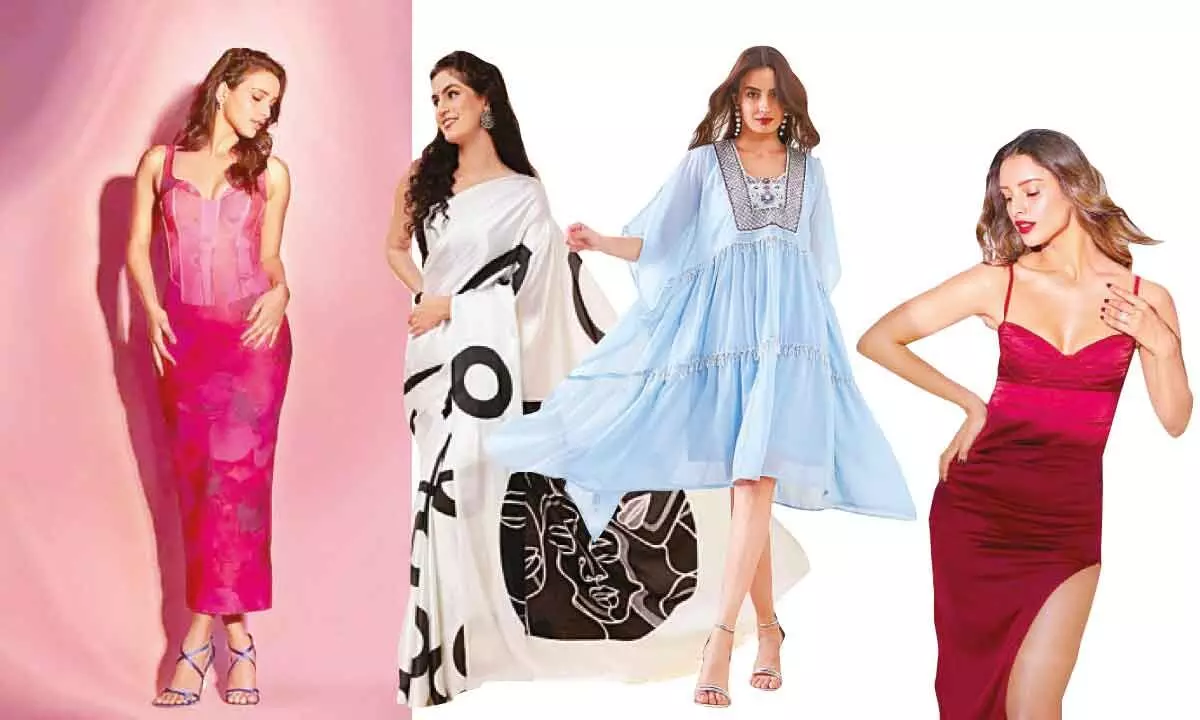Live
- What are the charges against Allu Arjun: Understanding the Charges Against Him
- Allu Arjun Objects to Arrest Procedure, Requests Breakfast and Change of Clothes
- ‘Fear’ movie review: A gripping suspense thriller
- Phenom Successfully Hosts IAMPHENOM India, Transforming the Future of Work with AI, Automation, and Talent Experience
- Constitution provides shied, guarantee to Indians: Priyanka in LS
- Allu Arjun’s Quash Petition Hearing at 2:30 PM; Chiranjeevi Visits Police Station
- Bommai hails 'One Nation, One Election' move as PM Modi’s bold decision
- Telangana IT Minister D. Sridhar Babu Highlights Future City Vision and Data Center Growth at IAMPHENOM Event
- Quota stir: Panchamasali seer violated law, claims Siddaramaiah
- India vs Australia: Third Test at Gabba – Match Timings and Details
Just In
The Fusion of Lifestyle and Fashion in Asian Countries: A Deeper Exploration


Asia, a land of rich cultural diversity and historical significance, has always been a vibrant hub of lifestyle and fashion. This continent...
Asia, a land of rich cultural diversity and historical significance, has always been a vibrant hub of lifestyle and fashion. This continent encompasses a myriad of styles, trends, and influences that are borne out of a unique fusion of tradition and modernity. Such is the allure of Asian fashion that it has captivated the attention of audiences worldwide.
Before we begin special thanks to Pooja Sharma (page manager of Paul Smith Vouchers), for providing insights on Indian culture, as she is native to India.
The Genesis and Evolution of Traditional Asian Fashion
Indian Sarees: An Emblem of Cultural Diversity
Indian sarees, the traditional draped attire worn by women in the Indian subcontinent, are an embodiment of the country's cultural diversity. This garment, dating back over 5,000 years, varies significantly across different regions, with each regional variant representing a distinct style, fabric, and design.
For instance, the Banarasi sarees are renowned for their exquisite gold and silver brocade or zari, fine silk, and opulent embroidery. On the other hand, the sarees from Kanchipuram, often referred to as Kanjeevaram sarees, are celebrated for their vibrant hues and grandeur, intricately woven with pure mulberry silk and gold zari.
Chinese Cheongsams: A Journey through Time
The cheongsam, also known as qipao, is a quintessential symbol of Chinese cultural heritage. It originated in Manchu-ruled China and has since undergone several transformations. Today's cheongsam is a blend of the traditional body-hugging attire and contemporary fashion sensibilities. Worn on special occasions and festivals, the cheongsam is a celebration of Chinese elegance and sophistication.
Japanese Kimonos: The Art of Minimalism
Japanese kimonos are a testament to the country's inherent simplicity and harmony. Made using fine fabrics such as silk, linen, and wool, kimonos are distinguished by subtle patterns and tranquil colors that reflect the Japanese aesthetic. The construction of a kimono, often involving multiple layers, echoes the Japanese appreciation for beauty expressed through modesty and restraint.
The Resurgence: Bridging the Gap between Tradition and Modernity
In recent times, Asian fashion has witnessed a resurgence on the global stage, thanks to innovative designers who are reinventing traditional outfits by marrying them with modern aesthetics. This contemporary spin on traditional wear retains the cultural essence while making them relevant to today's fashion-forward society.
Indian sarees now come in modern drapes and contemporary materials, appealing to a younger generation of fashion enthusiasts. In China, the qipao has been reinvented with bold colors, prints, and contemporary cuts. The kimono too has evolved, with popular modern adaptations seen in the form of kimono jackets and robes that are in vogue worldwide.
This harmonious blend of past and present, tradition and modern style, is what sets Asian fashion apart. It is not only a reflection of the continent's rich history but also a testament to its dynamic present and prospective future in the global fashion industry.
The Role of Media and Pop Culture in Shaping Asian Fashion Trends
Undoubtedly, media and pop culture have played a significant role in popularizing Asian fashion worldwide. The Korean wave, or Hallyu, with its K-pop music and K-dramas, has had a considerable impact on global fashion trends. The eccentric and eclectic styles of Korean pop artists have inspired numerous fashion trends, sparking global interest in Korean fashion, known as K-fashion.
Similarly, Japan's street fashion culture is another influential factor in the global fashion scene. With its unique blend of styles and subcultures, Japanese street fashion is a symbol of individualism and self-expression. Styles like Lolita, Decora, and Harajuku have garnered a cult following worldwide, greatly influencing international styling trends.
In India, Bollywood, the country's film industry, plays a major role in shaping fashion trends. The outfits worn by Bollywood celebrities in films, award functions, and public appearances often set the trend for popular fashion in the country and even abroad.
Fashion as a Lifestyle: The Asian Perspective
In Asia, fashion is not merely about clothing; it's a lifestyle and an integral part of one's identity. It is a mode of self-expression, a display of cultural pride, and a testament to the region's dynamism and creativity. This is evident in the way fashion is perceived and pursued in Asian countries, where traditional outfits are not just reserved for festivals or celebrations but are a part of daily life.
Conclusion
The fusion of lifestyle and fashion in Asian countries is a riveting saga of traditional elegance meeting contemporary flair. From the intricate patterns of an Indian saree and the sophisticated allure of a Chinese cheongsam to the minimalistic charm of a Japanese kimono, Asian fashion is a rich tapestry of diverse styles and influences. As Asia continues to make its mark on the global fashion landscape, it will continue to inspire and influence global fashion trends with its unique style

© 2024 Hyderabad Media House Limited/The Hans India. All rights reserved. Powered by hocalwire.com






